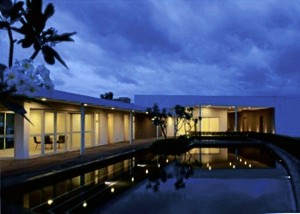Supporting creative freedom

THE AMETTA Place Clubhouse: unconventional forms wrap around conventional activites. Its developer, Alveo Land Inc., lives up to its commitment as innovator with its unique living environments.
“Every great architect is—necessarily—a great poet. He must be a great interpreter of his time, his day, his age.” —Frank Lloyd Wright
In other words, allow your architect some room for poetry and you may be in for a few pleasant surprises.
Many design professionals often whine about the issue of creative freedom—too many restrictions too soon. Of course, every project has its limitations, but what can be frustrating for a design professional is to be confronted with too many issues on cost, schedule and even on the difficulties of construction—so early in the design process. When parameters are too strongly dictated upon a design professional, ideas get stifled and creative juices stop to flow.
A design professional’s vision and innovative proposals are often unique to your project and the context alone—site, orientation, neighborhood, zoning restrictions—are enough to narrow down options. Ironically, they are the very same elements that get the juices flowing.
Dictation of your preferences and imposing too many fixed ideas on how something should look like and function is not why you hired a design professional. This will only confirm that what you really need is a draftsman, not an architect or designer.
When you hire a design professional, you not merely engage someone to draw up the documents you will need for your building permit submissions or for construction. You are first and foremost making a fair exchange for a creative vision, intangible ideas and a professional’s understanding of how forms and spaces work with human body and human emotions. Drawings are secondary and are merely the medium for the ideas.
But then again this places a huge responsibility on the design professional to balance the client’s needs with their own design vision. The design professional must come forth as an educator and informer, not merely selling its design to a client, but rather, truthfully enlightening the client on the vision and how it satisfies the client’s needs. At the end of the day, the hired professional must satisfy the project’s objectives, within the sphere of his creation.
A client should share their architect’s or designer’s vision of their form-space poetry, or at the least, allow them to explore the options of what their vision has to offer. As writer Salman Rushdie once said, “A poet’s work is to name the unnameable, to point at frauds, to take sides, start arguments, shape the world, and stop it going to sleep.”
Contact the author through designdimensions@abi.ph or through our Asuncion Berenguer Facebook account.

